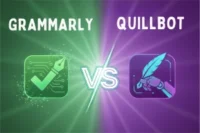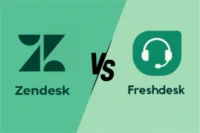Differences Between Bluetooth and NFC for File Transfer
Published: 25 Jan 2025
File transfer is a common need in today’s tech-driven world, and technologies like Bluetooth and NFC (Near Field Communication) make it possible. While both serve the same purpose, they work differently and are suitable for specific scenarios.

Let’s explore the key differences between Bluetooth and NFC for file transfer.
Quick Comparison Table
Here’s a quick comparison table of Bluetooth vs NFC:
| Feature | Bluetooth | NFC |
| Range | Up to 10 meters or more | Up to 10 cm |
| Speed | 1–3 Mbps | Slower (424 Kbps max) |
| Ease of Use | Requires pairing | Quick and simple tap to connect |
| Power Consumption | Moderate | Very low |
| Use Cases | Sharing files, audio, and more | Payments, access cards, small files |
Bluetooth vs NFC for File Transfer: Key Comparison
Let’s discuss all the differences between Bluetooth and NFC for File Transfer in detail:
1. Range of Connectivity
Bluetooth: Works over longer distances, up to 10 meters or more. Suitable for larger spaces or devices far apart. Ideal for outdoor use or bigger rooms. Maintains connection stability over a wide range. Can connect through walls and objects in some cases.

NFC: Operates only within a short range of 10 cm. Devices need to be very close for a connection. Best for quick tasks in close proximity. Ideal for secure, close-range communication. Used where long-range isn’t necessary, like payments.
2. File Transfer Speed
Bluetooth: Transfers data at speeds up to 3 Mbps. Suitable for large files like videos or music. Faster compared to NFC for file sharing. Maintains consistent speed for larger distances. Can handle multiple files efficiently.
NFC: Limited to 424 Kbps maximum speed. Best for small files like images or links. Not ideal for transferring large files. Offers reliable speed for close-range sharing. Great for instant, low-data communication.
3. Ease of Setup
Bluetooth: Requires pairing between devices. May involve a few steps to connect devices. Once paired, reconnecting is easier. Works well even if devices are moved further apart. May require troubleshooting for connectivity issues.
NFC: Works instantly with a simple tap between devices. No pairing process is required. Easier to use for non-tech-savvy users. Requires compatible hardware (NFC chip). Designed for quick, hassle-free connections.
4. Power Consumption
Bluetooth: Consumes moderate energy during active usage. Modern Bluetooth versions are more power-efficient. Drains battery faster with long-distance use. Can affect battery life when running continuously. Good for devices with larger battery capacity.

NFC: Extremely low power consumption. Consumes energy only during data transfer. Suitable for low-power devices like cards or tags. Does not impact battery life significantly. Preferred for energy-efficient tasks like payments.
5. Common Use Cases
Bluetooth: Sharing files like photos, music, and documents. Connecting wireless audio devices, such as headphones. Used in gaming controllers and IoT devices. Works for hands-free calling or audio in cars. Can connect multiple devices simultaneously.
NFC: Contactless payments, such as mobile wallets. Access cards for secure entry systems. Transferring small files like images or links. Pairing devices like speakers or cameras. Used in smart devices for one-tap actions.
Which is Better for File Transfer?
The choice between Bluetooth and NFC depends on your needs:
Bluetooth is better for:
- Larger file transfers due to faster speeds.
- Connecting devices over longer distances.
- Situations where multi-tasking is required.

NFC is better for:
- Quick, small file transfers or secure exchanges.
- Low-energy tasks like payments or access control.
- Close-proximity sharing without setup hassle.
Recommendation: If you need speed and range, Bluetooth is the way to go. If simplicity and energy efficiency are your priorities, NFC is the better option.
Conclusion
Both Bluetooth and NFC have unique strengths for file transfer. Bluetooth is ideal for larger files and longer distances, while NFC shines in quick, small file transfers or secure applications like payments. Understanding their differences can help you choose the right technology for your needs.
FAQs about Bluetooth and NFC for File Transfer
Here are some of the most FAQs related to Bluetooth and NFC for file transfer:
Bluetooth works over longer distances with faster speeds, while NFC operates only within close proximity with lower power consumption.
Bluetooth is better for large file transfers due to its faster speeds and wider range.
No, NFC is designed for specific tasks like payments or small file transfers, whereas Bluetooth handles more versatile tasks like audio and larger files.
Yes, Bluetooth offers encryption and pairing security, but users should ensure devices are trusted.
No, NFC does not require pairing; it works instantly with a simple tap between devices.
NFC uses significantly less power compared to Bluetooth, making it more energy-efficient.
NFC can transfer music files, but it’s slow and not ideal for larger files. Bluetooth is more efficient for this purpose.
Not all phones support NFC; compatibility depends on the device model and brand.
Yes, Bluetooth is much faster than NFC, with speeds up to 3 Mbps compared to NFC’s 424 Kbps.
No, NFC is not suitable for wireless audio. Bluetooth is the preferred technology for such use cases.

- Be Respectful
- Stay Relevant
- Stay Positive
- True Feedback
- Encourage Discussion
- Avoid Spamming
- No Fake News
- Don't Copy-Paste
- No Personal Attacks

- Be Respectful
- Stay Relevant
- Stay Positive
- True Feedback
- Encourage Discussion
- Avoid Spamming
- No Fake News
- Don't Copy-Paste
- No Personal Attacks





